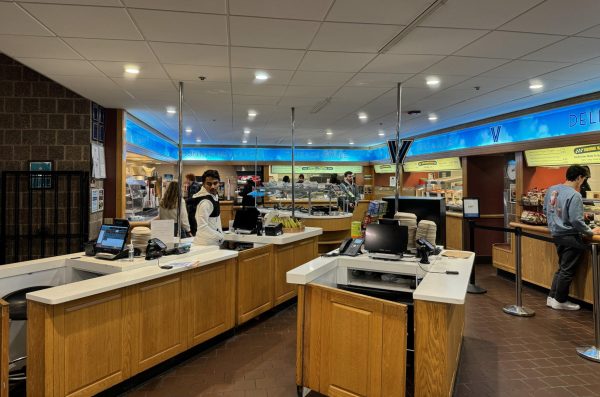Big 5 tradition needs to live on at Palestra
February 6, 2003
Following Villanova’s dismal 92-75 loss against Philadelphia Big 5 rival St. Joe’s Monday night, one might question how any Wildcat fan could walk away from such a game with anything good to report. Yet, there is one positive aspect about the ‘Cats debacle against their archrival Hawks — it was played at the Palestra. ‘Nova’s final Big 5 battle was not played in the Pavilion, it was not played on Hawk Hill and it was not played in the First Union Center. Instead, Philadelphia basketball was played where it always should be, in the third-oldest college hoops arena in the country.
The University of Pennsylvania chose the name Palestra because of its ancient Greek roots. The rectangular structure of the gymnasium allows fans to sit on all four sides, looking down upon the athletes on display center court, what the ancient Greeks once termed a palestra.
Since its opening in 1927, the Palestra has become the most storied arena in collegiate basketball, playing host to more games and more NCAA tournaments than any other building in the nation. Home to UPenn basketball for more than 60 years, Big 5 action has been happening on its hardwood for over 30 years. Most notably, the first-ever NCAA Championship was played at the Palestra in 1939, only to be followed by 50 other NCAA Tournament games in a span of 19 years.
One has to be part of the frenzied atmosphere to understand why so much basketball has been played on its historic court. Although accommodating 9,000, large by collegiate standards, the Palestra’s acoustics and close quarters increase the fans’ calls, cheers and jeers to a deafening boom. Students file up behind the baskets, while enthusiastic alumni are able to relive their own collegiate days along the sidelines, cramped together rooting for the next generation. In essence, a ticket to a game at the Palestra is a ticket to old-school basketball, to basketball before fancy scoreboards and luxury seats in huge professional arenas. Player after player comes off Palestra’s hardwood, repeating the same mantra: playing there was an experience like no other.
Despite the Palestra’s magic effect on collegiate basketball, in recent years Big 5 match-ups have found new locations. The primary reason for this change has been the driving force behind many collegiate sports: the almighty dollar. There is no question that in the last 10 years, collegiate basketball has transformed into a huge-money making machine for most Division I schools, and to stay in the game schools do have to keep the financial aspects of the business a top priority.
Moving home games to a facility such as the First Union Center to generate more revenue for the program is understood, if not always applauded. Moving Big 5 games from the Palestra to the First Union Center or even to the Pavilion is not. Philadelphia has long stood its tradition of intense cross-town rivalry, termed the Philadelphia Big 5, with the last team standing wearing the city crown on the Palestra’s center court. The Big 5’s relationship with the Palestra is not just a novelty in Philadelphia; it is known around the country by any true basketball fan. ESPN2’s coverage of the game Monday night occured largely because it was played in the Palestra. If the game was played on Hawk Hill or in the Pavilion, there is some doubt that the viewers beyond Comcast could have seen the game.
Moving the Big 5 battles elsewhere is messing with tradition and in this city it is not fair to fans, players and coaches to take away something as special and unique as a Big 5 game in the Palestra. So much of sports has changed in recent years that the preservation of some elements of the game must remain.
In the post-game conference, St. Joe’s head coach Phil Martelli campaigned for Big 5 games to be played in the Palestra with ticket distribution split evenly among the two teams. “This is where all the Philadelphia games should be played,” Martelli said. “It [the Palestra] has great history. I have no choice but to like it here. It is college basketball.”
Villanova head coach Jay Wright agreed, “Once it is in the Palestra it is electric,” and said that he would like it if all the Big 5 games were played in the Palestra. However, he went on to say in this day and age of collegiate basketball, to make it to the top you need the extra money generated from more ticket sales. “I like playing them here, but I would choose money in the budget over tradition,” Wright explained.
As the Big 5 programs determine the location of next season’s games, they should keep in mind that Philadelphia has long been a city of firsts, including in collegiate basketball. Maybe Philadelphia can continue its trend and become the first city to put its loyal and boisterous fans ahead of monetary concerns.










